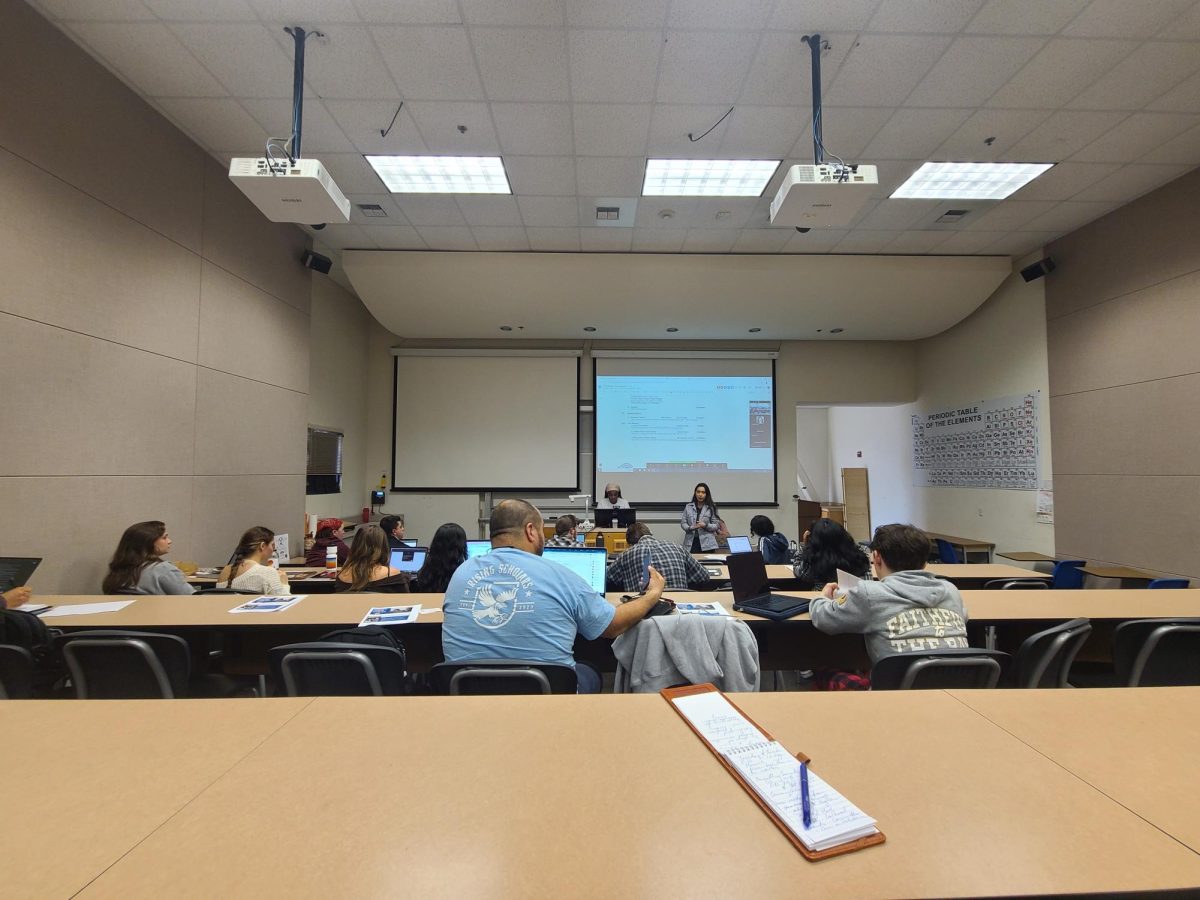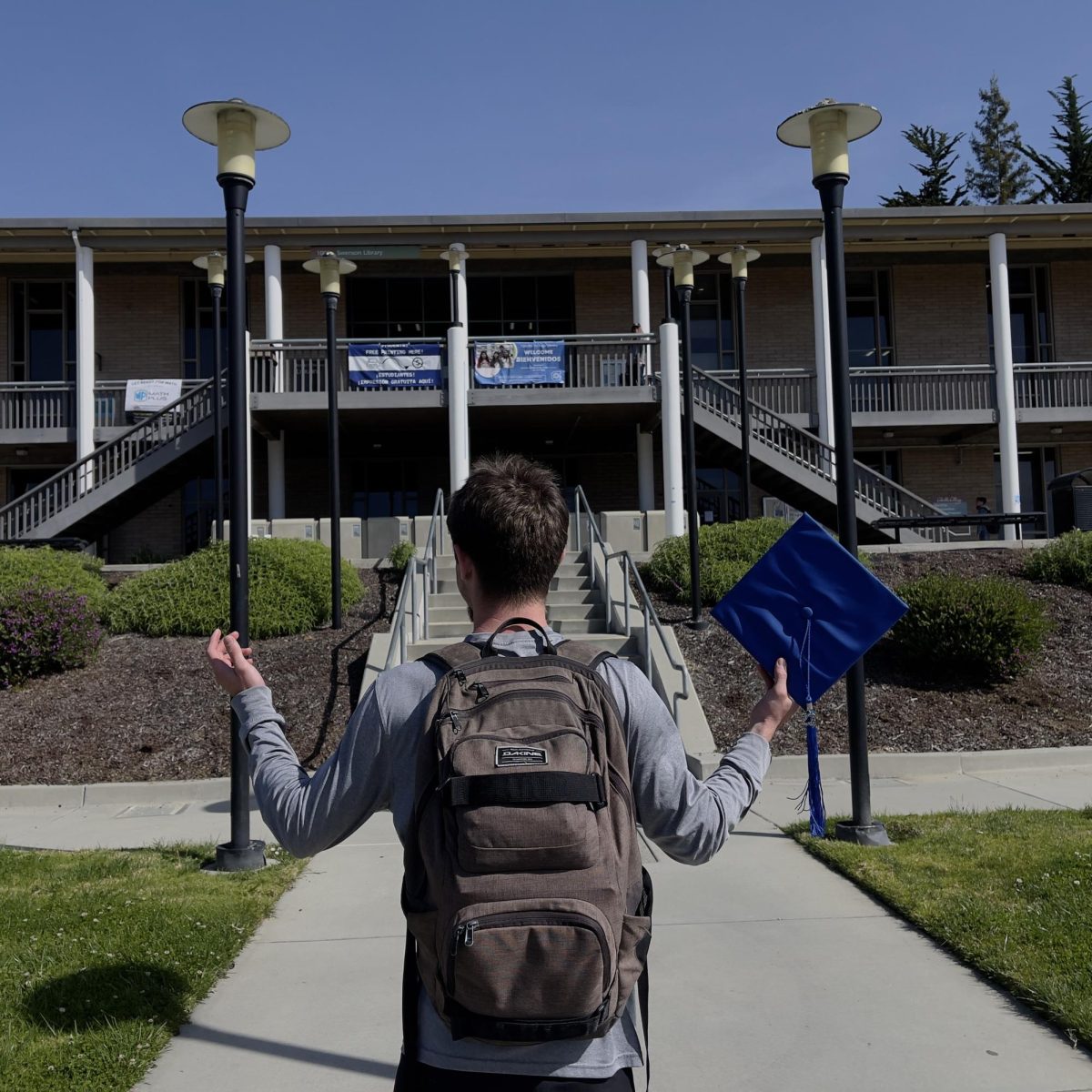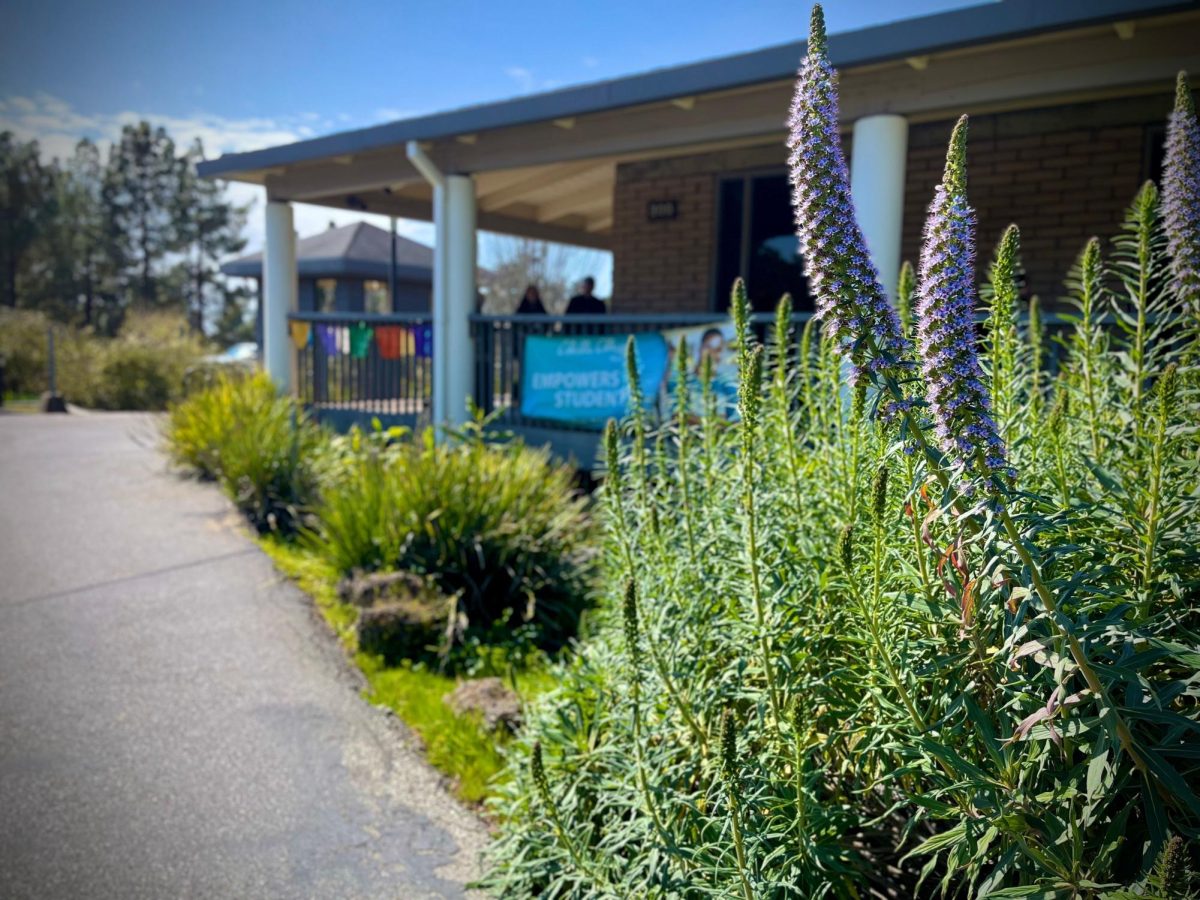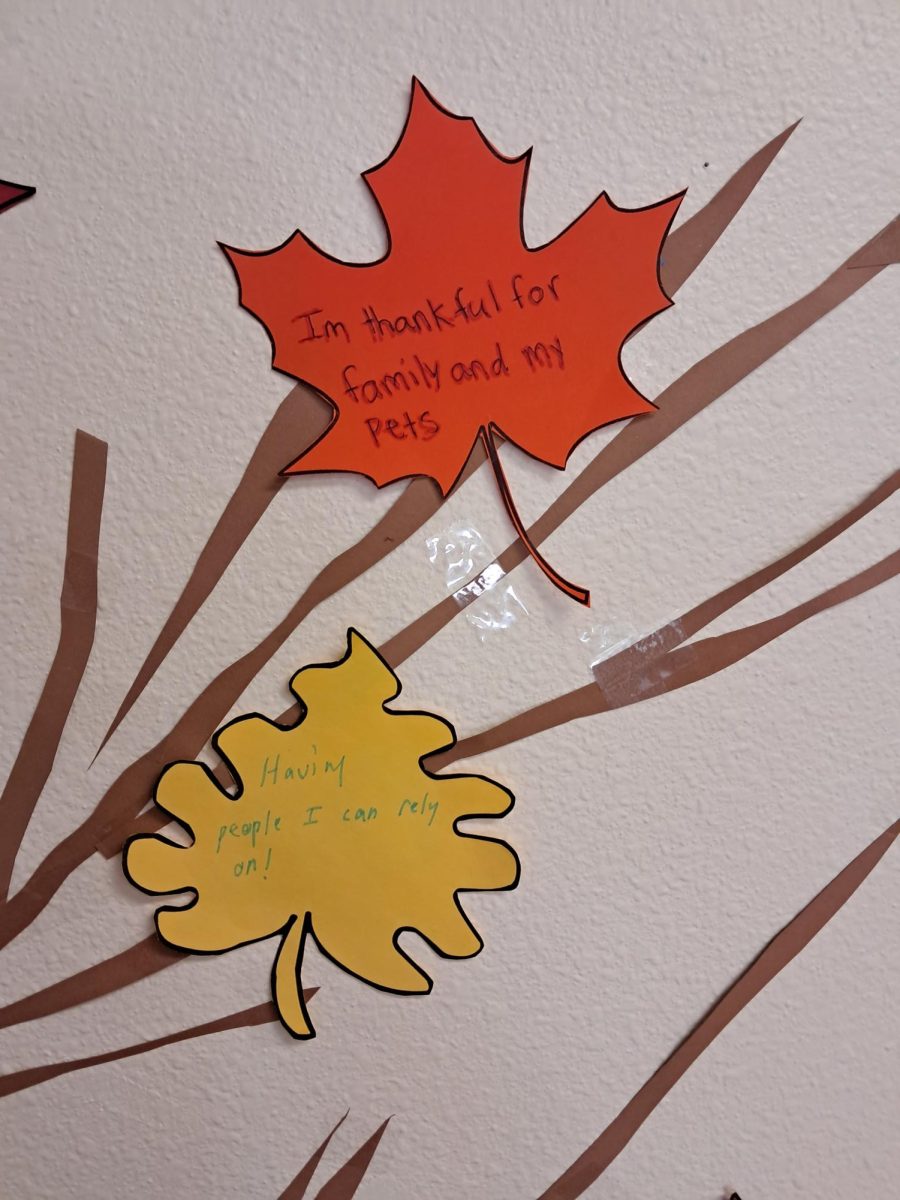Are you a student at Cabrillo who relies on free printing? Then, be prepared to pay to print starting in 2026.
Students can print for free until June 30th, 2026, says Lí Hlavaty, a Library Services Coordinator at Cabrillo College.
According to Hlavaty, students have been able to print for free because of a four-year-long COVID Recovery Block Grant (CRBG) that was applied for by the former library director, Joanna Messer Kimmit, in 2022.
In an Associated Students of Cabrillo College (ASCC) Student Senate meeting on April 17th, 2025, at the Watsonville Campus, Alta Cilicia Northcutt, Director of Student Life, Umoja & Welcome Services, addressed the demise of the student free printing budget in a Student Senate speech:
“Free printing is gonna go away. The agency that we’re using now is starting to bill over a certain amount, so we’re starting to get those bills. The grant that we got for free printing through the library has run out. And so we will need to make a decision on what printing looks like,” she said.
As to possible solutions from Cabrillo College for the continuation of free printing, Northcutt said Cabrillo College is considering students using their ID card to register to print and using a separate prepaid card to pay for printing.
Northcutt further suggested the possibility of printing copy limits, such as the first three prints being free for students.
Despite the grant for free printing running out, ASCC Student Senate Student Trustee Cody Jarvis expressed that there could be other avenues of funding to keep free printing on campus.
Jarvis also shared that student free printing is up for discussion in joint meetings with the budget committee. This committee has met bi-weekly on Wednesdays in February and March, including a recent meeting on Friday, April 23rd, 2025, according to boarddocs.com.
“They (College Planning Committee) do joint meetings with the budget committee. And they’ll talk about the budget as a whole, which probably includes free printing,” said Jarvis.
When asked about funding to continue free printing, Jarvis said, “It’s going to expire, and I don’t know if we’re going to re-up it in different ways. We’re going to have to find more funding to do it. We want to keep free printing for the 26th and 27th academic years.”
Yet, Jarvis did emphasize the Student Senate’s need to help find funding to continue free printing for students.
ASCC Senator At Large, Angela Caparas, a 19-year-old Nursing major at Cabrillo College, expressed hope about free printing still remaining at the Computer Technology Center (CTC) and the Science, Technology, Engineering, and Math (STEM) center.
“I hope that if we no longer have free printing, still, resources will be available around campus. I know the CTC and the STEM center have free printing, but I think those will be partially affected by the cuts,” she said.
When asked how the ASCC Student Senate might try to mitigate the cut to free printing, Caparas said, “We have different types of accounts in consideration. I think it will be a good discussion for our predecessors for next year. It would be a good point of inquiry for the future student senate.”
However, Caparas has suggested students should take advantage of the free printing while it is still available.
Yet students like Grayson Hutchinson, a second-year Cabrillo Anthropology Major and President of the Gay Straight Alliance (GSA) club, have concerns about the possible lack of free printing to centers at Cabrillo College campuses.
“A lot of people can’t afford to print a lot of things. A lot of classes require that you make poster boards or projects,” said Hutchinson.
Hutchinson shared additional concerns about a certain student population using CTC resources to print, being heavily affected by a cut to free printing.
“Older students are the main customers of the CTC, that’s where I see a lot of people who are 40 plus, as they don’t have access via WiFi or a computer at home. So the loss of free printing would be a detriment to them,” he said.
Hutchinson also shared his concern that students receiving services from the Accessibility Support Center (ASC) are being impacted the most by the loss of free printing.
Hutchinson commented further about printing accessibility at Cabrillo College.
“The point of Cabrillo, in my opinion, is to make school accessible and easier for people, no matter the age or ability status, and free printing is a big part of that,” said Hutchinson.
As to possible solutions to the drying up of student print funding, Hutchinson suggested students could apply for an allotment for free printing, similar to students asking to rent a laptop from the CTC.
Students currently have the ability to print 30 pages during a print session at the Integrated Learning Center (ILC), STEM center, and The Hub without being charged a fee at locations funded by the grant, according to Hlavaty.
Michelle Haverly, The Hub Program Coordinator, detailed as to why students can print no longer than 30 pages.
“The printers at The Hub will stop at 30 pages. Afterwards, students can reprint another 30 pages to break up their printing sessions to print more than 30,” said Haverly.
Olga Diaz shared that the ILC and the Watsonville CTC also have a 30-page limit to printing for students per session.
However, CTC at the Aptos Campus allows only students to print “ 20 pages at a time” via black and white or color during a print session, according to student worker Mohinni Logue.
Student Senate Watsonville Representative, Melanie Camacho-Estevez, shared the Student Senate’s collaboration with faculty, who are concerned about the impact of the cut for free printing, such as Dr. Tera Martin, coordinator for the ILC at the Watsonville Cabrillo campus.
“She brought up that there are budget cuts that are going to happen because of the political climate that we’re in. And she mentioned free printing because she’s aware that it takes a while for things to get traction. And she wanted us to start talking about what we are going to do once this grant, that’s funding free printing, expires,” she said.
Camacho-Estevez further talked about her interest in learning how often her constituents use free printing by providing a survey to her constituents on campus.
When asked how the Student Senate can get feedback from students about the drying up of funds to free printing, Camacho-Estevez said, “Usually we get one senator that’s really passionate about it. They make a survey and then they send it out. For example, our treasurer Róise O’Connor is still very involved with the Multicultural Center and free spaces for students. So, she sent out surveys for that.”
Regarding possible solutions to the dissipation of free printing, Camacho-Estevez said, “We might just focus on a few printers for free printing.”
The Guardian Scholars program will not be impacted by the CBRG grant expiring as their funding for printing is separate from this grant, according to Eli Chance, Director of the Rising Scholars program.
Camacho-Estevez further stressed her dedication to her constituents at the Watsonville campus.
“This is honestly like a really hard time, and especially here at the Watsonville campus. There’s a different population here, there are different needs. We are probably going to handle these budget cuts a bit differently than Aptos, just because of the types of students that come here. I do want to do my best to support them through this,” she said.
As to plans for a survey to receive feedback from Cabrillo students, she expressed interest in collaborating with the student body in forming a survey of her own.








